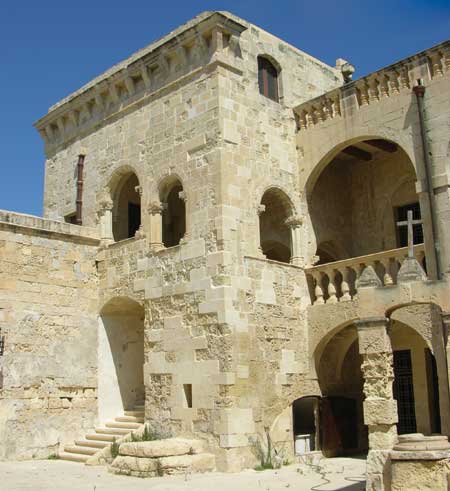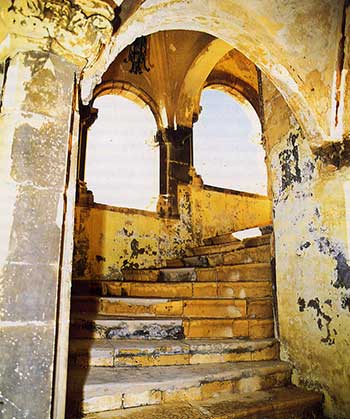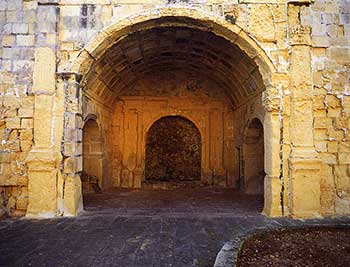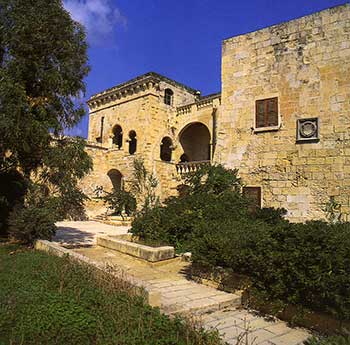

In its arrival, the Order found the islands to be poorly defended with the castle being the sole fortification within the harbour. The Castrum Maris consisted of an elevated keep or tower dominating a primitive perimeter wall of vertical curtains with interspaced towers very much in the tradition of several strongholds of Norman origins in neighbouring Sicily. Excavated and concealed within the rock beneath the cavalier, were the long-existing chambers of the slave dungeon.
When Grandmaster L’Isle Adam set foot on the island on October of 1530, he took up residence in the castle which the Order took from the de Nava family, and turned it into his own residential palace and the Order’s Headquarters. The Grandmasters resided in the castle until the 27th February 1558 when Jean de La Valette, concerned with the social situation and the fortification works that were in hand, moved to the refurbished house of the Conventual Conservator in Birgu so as to be closer to the people, as well as the major construction works. Nevertheless the castle was too small to accommodate the Order’s needs as well as the 3000 people that followed it from its last residence at Rhodes. Accommodation for these had to be found ‘not without great difficulty’ outside the limits of the castle.
 |
|
Nymphaeum
|
The first document that refers to the castle as Fort St Angelo dates to the 19th July 1540, and it states that the Knight Claudius de Humblieres was confined in the Carceri Sancti Angeli. This name may have originated as a reminiscent of the Feudal Lord Count Angelo di Melfi, or as a commemoration of Castel Sant’ Angelo in Rome on the site of Hadrian’s Mausoleum. Nevertheless, a painting of the Carmelite St Angelo once adorned the niche facing the main entrance to the Fort.
 The Order spared no time in embellishing the Fort with a nymphaeum – a garden landscape ornament – that is still in existence, and furthermore in upgrading and strengthening the old Medieval Castrum Maris so that it would be fit to assume the twin roles of guarding the Grand Harbour and protecting the small medieval fishing village of Borgo. The Order raised a grand cavalier to control the entrance to Marsamxetto Harbour, and by 1536 it widened its ditch and excavated it just below sea level – turning it into a moat and isolating the castle completely from the Borgo. This reduced the military threat of a direct landward assault, and also served to set the boundary of the Grandmaster’s residential palace.
The Order spared no time in embellishing the Fort with a nymphaeum – a garden landscape ornament – that is still in existence, and furthermore in upgrading and strengthening the old Medieval Castrum Maris so that it would be fit to assume the twin roles of guarding the Grand Harbour and protecting the small medieval fishing village of Borgo. The Order raised a grand cavalier to control the entrance to Marsamxetto Harbour, and by 1536 it widened its ditch and excavated it just below sea level – turning it into a moat and isolating the castle completely from the Borgo. This reduced the military threat of a direct landward assault, and also served to set the boundary of the Grandmaster’s residential palace.

